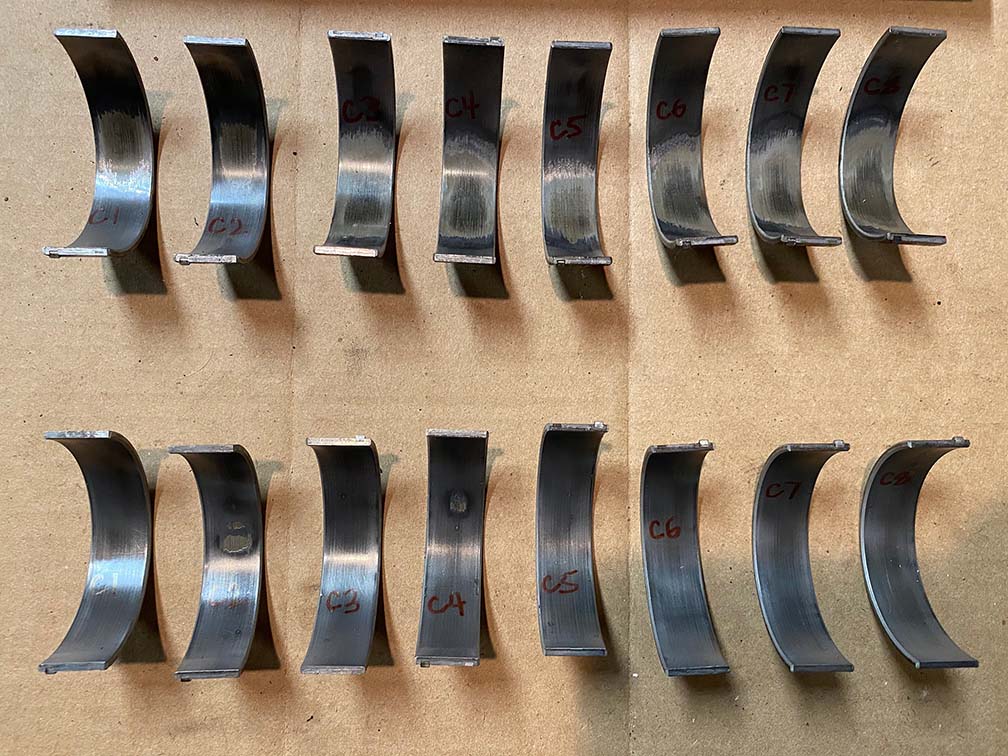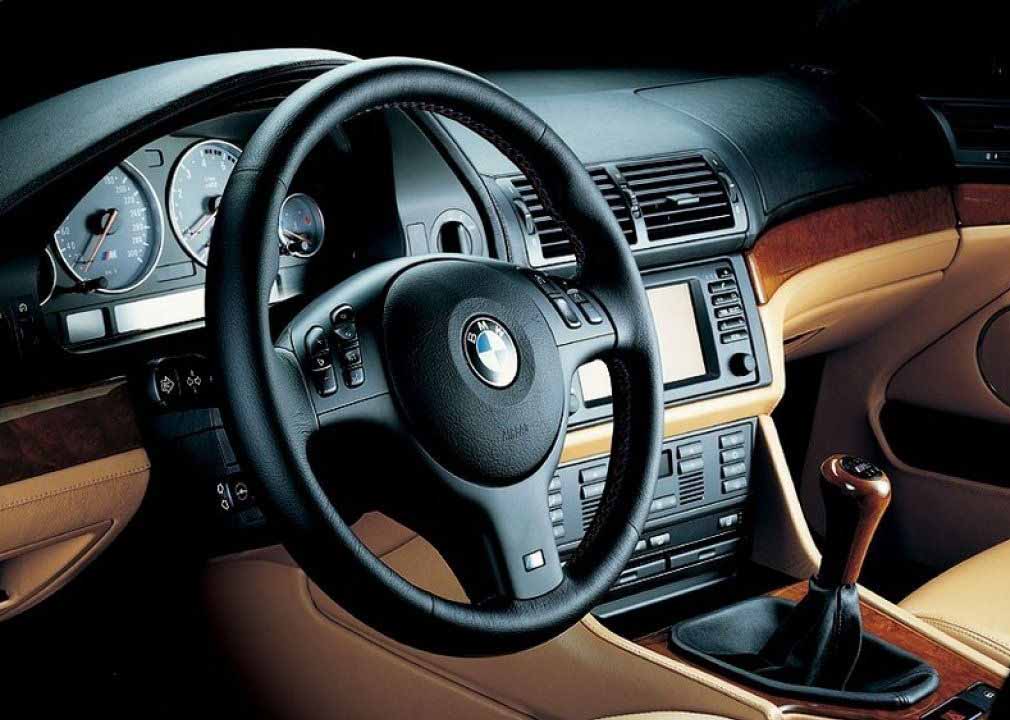When it comes to V8 BMWs, there are few nameplates more revered in BMW’s M division than the E90 M3 and the E39 M5. For decades, the Bavarian automaker has been making some of the highest-performing and well-rounded sports sedans on the market, and these two are aging very well and will go down in history as two modern classics.
Although both the E90 M3 and the E39 M5 are powered by naturally-aspirated V8s and available in a manual transmission, these are quite different cars in terms of power delivery, handling, and driving dynamics. Both are icons in their own right; how do they compare?
BMW E90 M3 vs. BMW E39 M5: Overview

| BMW E90 M3 | BMW E39 M5 | |
|---|---|---|
| Engine | 4.0 L naturally-aspirated V8 (S65B40) | 4.9 L naturally-aspirated V8 (S62B50) |
| Horsepower | 414 hp @ 8,300 RPM | 394 hp @ 6,600 RPM |
| Torque | 296 lb-ft @ 3,900 RPM | 369 lb-ft @ 3,800 RPM |
| Transmission | 7-speed DCT, 6-speed manual | 6-speed manual |
| Dimensions | Length : 4,615 mm (181.69 in) Width: 1,804 mm (71.02 in) | Length : 4,783 mm (188.3 in) Width: 1,801 mm (70.9 in) |
| Weight | 3,600 lbs | 3,957 lbs |
| Years Produced | 2007-2013 | 1998-2003 |
| 0-60 mph | 4.1 seconds | 4.7 seconds |
BMW E90 M3 vs E39 M5: Engine & Power
When it comes to raw engine power and torque, both the BMW E90 M3 and the E39 M5 pack a serious punch. Both are powered by naturally-aspirated V8 engines, and both engines are capable of delivering impressive performance. However, there are some key differences between the two engines in terms of how the power is delivered.
The E90 M3 is powered by the S65, a modern high-revving 4-liter V8 that is capable of producing 414 horsepower and 295 lb-ft of torque. The S65 has a redline of 8400 RPM, and it likes to be revved up high where it produces most of its power. Low-end torque is relatively low but the top-end power more than makes up for it.
In contrast, the E39 M5 uses the S62, an old-school German muscle high-displacement 4.9 liter V8 that produces 394 horsepower and 369 lb-ft of torque. With its significantly higher torque rating and a redline of 7,000 RPM, it provides a very different driving experience.

The S65 of the E90 M3 and the S62 of the E39 M5 deliver power differently
The E90 M3 has a slight edge in terms of horsepower but it’s weak on the low end of the RPM range. However, the E39 M5 is not far behind in terms of horsepower, and its higher torque down low more than makes up for it.
There is no winner here as they both feature different types of V8s and both will deliver an exhilarating driving experience once you get in in the flow of how each of these engines delivers power.
Read more: S62 vs. S65 Engine Comparison
BMW E90 M3 vs E39 M5: Handling & Driving Feel
Both cars offer excellent handling and driving dynamics. The E90 M3 is more nimble and raw, with a slightly less refined feel on the road. The E39 M5, on the other hand, offers a more polished driving experience that is more isolated from the road, with a softer suspension, and less steering wheel feedback. The E90 M3 weighs around 3,600 lbs while the E39 M5 weighs 3,957 lbs.
The E90 M3 handles better and offers a more engaging driving experience
Ultimately, both cars handle very well, but the E90 M3 is better suited to enthusiasts who enjoy a more engaging driving experience, and sharp precise turns.
The E90 M3 is nearly 400 lbs lighter, smaller, and equipped with a more precise steering rack and a stiffer suspension, which may make the E39 M5 feel big and boaty in comparison.
BMW E90 M3 vs E39 M5: Tuning
When it comes to tuning and modding, both the BMW E90 M3 and the E39 M5 can be tuned similarly. Both the S65 and the S62 are well-receptive to mods such as an upgraded exhaust, a tune, and an intake upgrade. The S65 can see gains of ~40 whp while the S62 can gain around ~30 whp with these mods alone. Apart from the slight power gain, you’ll hear more intake and exhaust noise.
For big power gains on the S65 or the S62, you’ll need a forced induction upgrade
Although these engines respond well to mods considering they are naturally aspirated, the real gains come from aftermarket forced induction kits. Both engines can be equipped with a supercharger, which can add around ~150 whp of reliable power. However, these kits are expensive, and installing one can cost at least $10,000. The S65 also has stroker kits that increase displacement to 4.4 L and again add a considerable amount of power at a high cost.
Overall, these engines can be tuned, but beyond basic bolt-ons, you’ll need to opt for a supercharger kit or a turbo kit if you want to make big power.
Our recommendation is to make your E90 M3 and E39 M5 sound as good as possible with an excellent exhaust system. But if you’re looking for big power gains with a few mods and tune, an S58 or B58-powered BMW are much better platforms to do so.
BMW E90 M3 vs E39 M5: Reliability & Common Issues
When it comes to choosing a reliable high-performance car, it’s tough to beat the BMW E90 M3 and the E39 M5. This is due to their relatively simple engine configuration. A good ol’ naturally aspirated V8 keeps complexity relatively low although it’ll require more maintenance than other NA V8s such as an LS engine. Both of these cars will be more reliable than newer BMWs with turbo V8 engines such as the S63 or the N63.
E90 M3 Common Issues:
- High rod bearing wear
- Failing throttle body actuators
- Idle control valve
- Oil leaks from the valve cover
E39 M5 Common Issues:
- Oil leaks
- Timing chain guides
- VANOS issues
The weak point of the S65 is its rod bearings. The rod bearings on the S65 will wear out faster than in most engines and if they are not replaced on time, this may eventually lead to catastrophic engine failure. it is recommended to replace the rod bearings on the S65 every 60K miles. Another common failure of the S65 are the throttle body actuators. The plastic gears in the throttle body wear out and will eventually need to be replaced.

Both cars are reliable if you keep up with preventive maintenance
On the other hand, the main reliability issue of the S62 in the E39 M5 is its VANOS system. It uses an antiquated VANOS system with two separate units controlling variable valve timing which is prone to failure. This leads to rough idle, power loss, and noise coming from the engine. The VANOS unit can be rebuilt and replaced when this happens.
Keep up with preventive maintenance, change the oil every 6K miles, and warm up your engine before hard acceleration, and both the E90 M3 and the E39 M5 will last for hundreds of thousands of miles.
BMW E90 M3 vs E39 M5: Interior & comfort
Both the BMW E90 M3 and the E39 M5 are comfortable cars with great interiors. The E90 M3 has a more modern interior design, although it’s just a 3-Series inside. The basic interior amenities and materials look and feel like that of an entry-level luxury car.
In contrast, the E39 M5 has a more spacious and luxurious feel, due to an abundance of premium materials, and high-end finishes.

The E39 M5 has a more premium interior with more comfort than the E90 M3
As far as comfort goes, the E39 M5 definitely has an edge over the E90 M3. It’s more spacious and laid out more comfortably for passengers, with more room on the back seats. Not to mention its suspension is softer which leads to better ride quality for passengers. If you frequently use the back seats, the E39 M5 seems to be the better choice.
BMW E90 M3 vs E39 M5: Price & value
In recent years, the prices of both the BMW E90 M3 and the E39 M5 have skyrocketed. The E90 M3 can now be had for around ~$30K USD, and the E39 M5 for around ~$60K USD. These prices correspond to models with relatively low mileage.
We consider E90 M3 to be the better value out of the two. It is a newer model with updated features, an incredible-sounding V8, and timeless looks. It is also more fuel-efficient than the E39 M5 and can be had with a dual-clutch transmission for a more comfortable and laid-back driving experience.
Closing thoughts: E90 M3 or E39 M5?
Choosing between the E90 M3 and the E39 M5 is indeed tough. Both cars offer incredible performance, legendary V8 engines, and timeless styling, each having its own unique strengths and weaknesses.
If your focus is on ultimate track performance, then the E90 M3 is probably your best bet. However, if you want a more well-rounded luxury performance car that’s just as at home in the city as it is on the racetrack, then the E39 M5 is tough to beat as it offers excellent performance and sublime comfort.
We personally prefer the E39 M5, and we think it’s one of the best BMWs ever made. Nothing like a full-size sedan with timeless looks, a growling V8, and a 6-speed manual. The true super-saloon.
Both the BMW E90 M3 and the E39 M5 are without question true modern classics.

